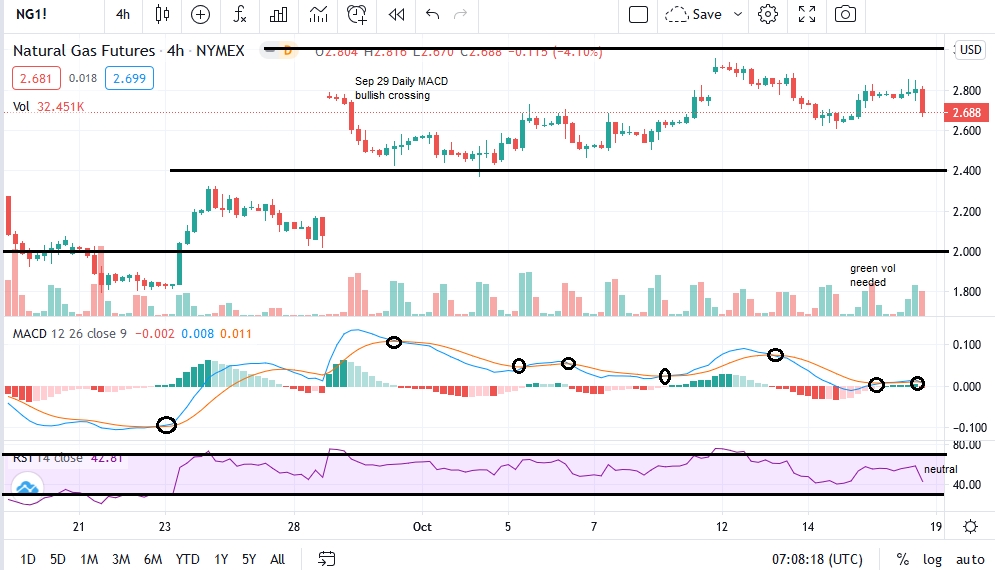Natural Gas futures on the NYMEX had a volatile week before closing 2.8% lower than a week ago at $2.25. EIA confirmed on Thursday a build of 46 Bcf in working underground stocks for the week ended Oct. 9. The inventory is currently at 3,877 Bcf, 11.1% higher y/y, 10% above the 5-year average. Both percentages coming down fast since April, we are now only a couple of weeks before the withdrawal season begins.
The January contract managed to gain some momentum last week and this is relieving to the general direction of the market. The January contract is currently trading at $3.39. For the next couple of months, a benchmark for spring contracts will be interesting to find as the price is ranging on a plateau and many market participants will start to think of the post-winter downtrend already amid a resurgence in COVID cases across the Lower 48. Calendar analysis is inevitable and it is showing that a seasonal spread has already been wide.
We have liked to buy the dips on directional trading since May but selling opportunities on near-term charts are now also to be found on exhaustion. Another winter spike is very probable, especially if equities across the board face fresh uncertainties. Short term use of the Natural Gas market is typical on end-of-year hedging. I want to be clear about this. We have already taken 50% on real-time trading since May, buying the dips on directional trading. We are going to continue testing it, but we do not want to become too greedy with this idea. Spikes, aggressive legs and wider moves have been seen early this season and a post-winter downtrend might as well begin earlier. May contract currently trading at $2.88.
U.S. macro data and the Dollar Index to be routinely monitored. Housing starts, flash PMI and third-quarter earnings key in the coming week as the recovery is showing signs of slowing. Daily, 4hour, 15min MACD and RSI pointing entry areas. 
